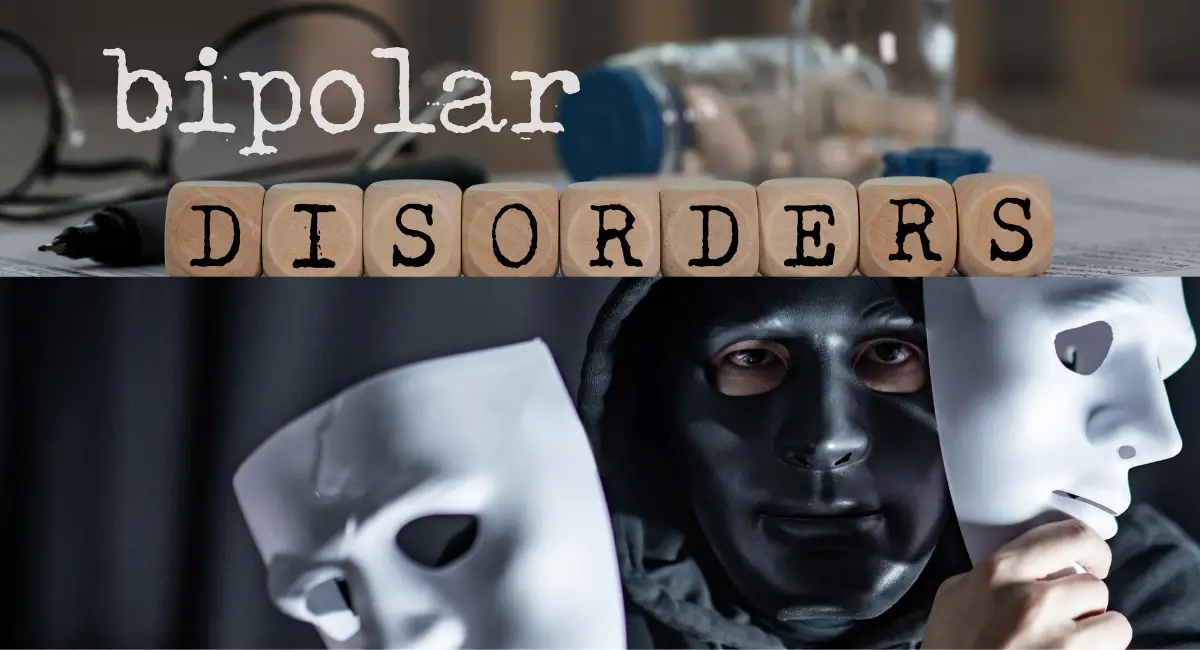
Dissociative Amnesia: Symptoms, Causes, and Therapy Options
Contents
Introduction
Dissociative Amnesia is a mental health condition in which individuals experience an inability to recall important personal information, usually following a traumatic or stressful event. This memory loss is far beyond normal forgetfulness and typically involves gaps in memory that may range from minutes to years. Dissociative Amnesia is classified under Dissociative Disorders in the Diagnostic and Statistical Manual of Mental Disorders, Fifth Edition (DSM-5), where it is considered a disruption in memory functioning due to psychological factors, often associated with trauma.
The primary purpose of dissociative amnesia is to block out stressful or traumatic memories, protecting the individual from overwhelming emotions. While the condition primarily affects memory, it can also interfere with identity and consciousness. This article will explore Dissociative Amnesia, focusing on the types of amnesia: Localized Amnesia, Selective Amnesia, and Generalized Amnesia. We will cover the Symptoms, Causes, and Therapy Options for this disorder.
Types of Dissociative Amnesia
Dissociative Amnesia manifests in various forms, each involving different degrees of memory loss. The three main types are Localized Amnesia, Selective Amnesia, and Generalized Amnesia.
1. Localized Amnesia
Localized Amnesia is the most common type of dissociative amnesia, where an individual loses memory of specific events that took place during a particular time, usually immediately following a traumatic event. The memory loss can be limited to a few hours or span several days or weeks.
- Localized Amnesia typically occurs after experiencing severe trauma, such as an accident, natural disaster, or violent event. The individual’s mind effectively “blocks out” the memories of the traumatic event as a protective mechanism.
- Individuals with localized amnesia may be completely unaware of the memory gaps or only become aware when they are unable to recall significant details about the event or time period.
Maria, a 30-year-old woman, was in a car accident that resulted in the death of her best friend. Although she was conscious during the accident, she cannot remember anything about the hours immediately after the crash. The memories of that day have been erased, leaving a gap in her recall.
2. Selective Amnesia
In Selective Amnesia, the individual loses memory of certain details or specific aspects of an event, while other memories remain intact. The individual may remember some parts of the trauma but have difficulty recalling emotionally significant details.
- Selective Amnesia allows the individual to remember some, but not all, aspects of a traumatic event. For example, they may recall the general timeline or events surrounding the trauma but fail to remember the most emotionally distressing parts of the experience.
- This form of amnesia can be particularly distressing, as it creates fragmented memories that may contribute to confusion or anxiety.
John was assaulted during a robbery but can only remember entering the store and talking to the cashier. He cannot recall the actual moment of the assault, although he is aware that something happened. His memories are fragmented, leaving key details missing from his recall.
3. Generalized Amnesia
Generalized Amnesia is the rarest and most severe form of dissociative amnesia, in which individuals lose memory of their entire life history, including their identity, personal relationships, and background. This type of memory loss often occurs suddenly and can be triggered by extreme trauma or stress
- Generalized Amnesia can leave individuals feeling completely detached from their identity and life history. In some cases, the individual may not even recognize their own name, family members, or other aspects of their personal life.
- This form of amnesia is often temporary, but recovery may take time, and the individual may need professional support to reintegrate their memories.
Emma, a 45-year-old woman, was found wandering the streets, unable to remember who she was or how she got there. She did not recognize her family when they came to the hospital, and her entire life history seemed erased. After a detailed assessment, she was diagnosed with Generalized Amnesia.
Common Symptoms of Dissociative Amnesia
Dissociative Amnesia presents a range of memory-related symptoms that vary depending on the type of amnesia. Below is a table outlining the common symptoms of Dissociative Amnesia and examples of how they manifest in daily life:
| Symptom | Description/Example |
|---|---|
| Memory Loss | Inability to recall personal information or details about a traumatic event. For example, someone may be unable to remember a specific traumatic incident, like an accident. |
| Localized Memory Gaps | Loss of memory for a specific period, such as a few hours or days surrounding the trauma. For example, someone may forget what happened during a particular time frame after a car accident. |
| Selective Memory Loss | Loss of memory for certain aspects of an event, while other parts are remembered. For example, someone may remember the surroundings of a trauma but not the most distressing moments. |
| Generalized Amnesia | Complete loss of personal identity and life history. For example, someone may be unable to remember their name, family members, or details about their past. |
| Confusion and Disorientation | Feeling disoriented or confused due to gaps in memory. For example, someone may feel confused about how they ended up in a particular location. |
| Emotional Numbness | Reduced emotional response to memories or events, often due to trauma-related amnesia. For example, someone may feel disconnected from emotions related to the event they cannot remember. |
| Impaired Functioning | Difficulty in performing daily tasks due to memory loss. For example, someone may struggle to go to work or maintain relationships because they cannot remember key details. |
Causes and Risk Factors of Dissociative Amnesia
Dissociative Amnesia is primarily caused by exposure to traumatic or highly stressful events. It is a psychological defense mechanism designed to block out overwhelming memories. Below are some of the main causes and risk factors for developing dissociative amnesia.
1. Severe Trauma
The most common cause of dissociative amnesia is exposure to severe trauma, such as physical or emotional abuse, sexual violence, accidents, or witnessing death. The amnesia serves as a way to protect the individual from the emotional pain associated with the event.
- Dissociative Amnesia occurs when the brain dissociates from traumatic memories to protect the individual from the psychological distress these memories cause. This disconnection from the traumatic experience results in gaps in memory that can affect daily life and functioning.
- Trauma-related dissociative amnesia is often seen in survivors of abuse, combat veterans, or individuals who have witnessed violent or catastrophic events.
John, a war veteran, developed dissociative amnesia after experiencing multiple traumatic events during combat. Although he remembers his time in the military, he cannot recall specific incidents related to the violence and chaos of the battlefield.
2. High-Stress Situations
In addition to trauma, high levels of stress or emotional distress can also trigger dissociative amnesia. Stressful situations, such as the sudden death of a loved one, financial crises, or significant relationship problems, can overwhelm an individual’s ability to cope.
- Prolonged exposure to chronic stress or intense emotional distress can cause the mind to dissociate, creating memory gaps as a way to escape or cope with overwhelming feelings. These memory disruptions can become more severe if the stress is persistent.
- High-stress situations can exacerbate existing psychological vulnerabilities, such as anxiety or depression, further contributing to memory disruptions and dissociative symptoms.
Emma developed selective amnesia after going through a highly stressful divorce. She cannot remember certain arguments or specific events that took place during the last year of her marriage.
3. Childhood Trauma and Abuse
Children who experience severe neglect, abuse, or trauma during their formative years are at a higher risk of developing dissociative amnesia later in life. The amnesia often develops as a defense mechanism to block out the overwhelming trauma they experienced as children.
- Children’s brains are highly adaptive, and in cases of abuse or neglect, they may use dissociation to protect themselves from traumatic experiences. This dissociation may continue into adulthood, leading to amnesia for childhood events or later traumatic incidents.
- Repressed memories of childhood trauma can resurface later in life, often triggered by new stressors or reminders of the original trauma, further contributing to memory gaps.
Maria, who experienced physical abuse as a child, has large gaps in her memory related to her early years. As an adult, she struggles to recall significant details about her childhood, and certain events seem entirely erased from her mind.
Therapy and Treatment Options for Dissociative Amnesia
Treatment for Dissociative Amnesia focuses on helping individuals recover their lost memories in a safe, controlled manner and addressing the underlying psychological trauma. Below are key treatment options:
1. Cognitive Behavioral Therapy (CBT)
Cognitive Behavioral Therapy (CBT) is highly effective for treating dissociative amnesia by helping individuals understand the link between their thoughts, emotions, and behaviors. CBT addresses distorted thinking patterns related to memory loss and teaches coping skills for managing stress and trauma.
John collaborates with a Cognitive Behavioral Therapy (CBT) therapist to address the memory gaps stemming from his trauma. In the supportive and structured therapy sessions, he gradually begins to understand the connection between his traumatic experiences and the disruptions in his memory. By learning to identify and process how these events have impacted his thoughts and emotions,
2. Trauma-Focused Cognitive Behavioral Therapy (TF-CBT)
Trauma-Focused Cognitive Behavioral Therapy (TF-CBT) is specifically designed to help individuals process and integrate traumatic memories. For individuals with dissociative amnesia, TF-CBT can help uncover repressed memories and address the emotional impact of the trauma that caused the memory loss.
Maria’s therapist utilizes Trauma-Focused Cognitive Behavioral Therapy (TF-CBT) as a structured and supportive approach to help her gradually recall, confront, and process the deeply buried traumatic events from her childhood that contributed to her dissociative memory gaps. By revisiting these memories within a safe, controlled, and therapeutic environment, Maria is able to emotionally process the overwhelming experiences that once seemed fragmented and inaccessible.
3. Dialectical Behavior Therapy (DBT)
Dialectical Behavior Therapy (DBT) is useful in managing the emotional dysregulation often associated with dissociative disorders. It teaches individuals how to handle stress and trauma without resorting to dissociation. DBT focuses on mindfulness, distress tolerance, and emotional regulation.
Emma embarks on a journey to learn Dialectical Behavior Therapy (DBT) techniques, aiming to navigate and manage the overwhelming emotions associated with her dissociative amnesia. This condition often leaves her struggling to cope with the intense feelings triggered by fragmented and disjointed memories from her past. Through a consistent practice of mindfulness exercises, she learns to focus her attention on the present moment, reducing her tendency to dissociate or feel disconnected.
Long-Term Management of Dissociative Amnesia
Managing Dissociative Amnesia over the long term requires ongoing therapy, support, and development of coping strategies. Below are key strategies for long-term management:
- Consistent Therapy: Regular participation in CBT, TF-CBT, or DBT helps individuals gradually recover memories and develop healthy ways to process trauma.
- Safe Memory Recovery: Working through memories at a safe pace with a therapist ensures that recovered memories do not overwhelm the individual emotionally.
- Emotional Support: Building a strong support network, including friends, family, or trauma-informed professionals, helps individuals manage their symptoms and feel secure as they navigate memory recovery.
- Stress Management: Incorporating stress-reduction techniques such as mindfulness, relaxation exercises, and emotional regulation skills helps individuals cope with triggers and reduce the risk of future dissociative episodes.
Conclusion
Dissociative Amnesia is a complex mental health condition that involves memory loss due to trauma or extreme stress. While the symptoms can vary in severity, with some individuals experiencing memory gaps related to specific events (Localized or Selective Amnesia) and others losing their entire identity (Generalized Amnesia), treatment is available. Therapies such as Cognitive Behavioral Therapy, Trauma-Focused Cognitive Behavioral Therapy, and Dialectical Behavior Therapy are highly effective in helping individuals recover lost memories, process trauma, and develop healthier coping strategies. Long-term management strategies, including consistent therapy, safe memory recovery, and emotional support, are crucial for improving functioning and overall well-being.
References
- American Psychiatric Association. (2013). Diagnostic and Statistical Manual of Mental Disorders (5th ed.). Washington, DC: American Psychiatric Publishing.
- Van der Hart, O., Nijenhuis, E. R., & Steele, K. (2006). The Haunted Self: Structural Dissociation and the Treatment of Chronic Traumatization. W.W. Norton & Company.
- Putnam, F. W. (1989). Diagnosis and Treatment of Multiple Personality Disorder. Guilford Press.
- Courtois, C. A., & Ford, J. D. (2013). Treating Complex Traumatic Stress Disorders: An Evidence-Based Guide. Guilford Press.
- Ehlers, A., & Clark, D. M. (2000). A cognitive model of posttraumatic stress disorder. Behaviour Research and Therapy, 38(4), 319-345.
Explore Other Mental Health Issues







